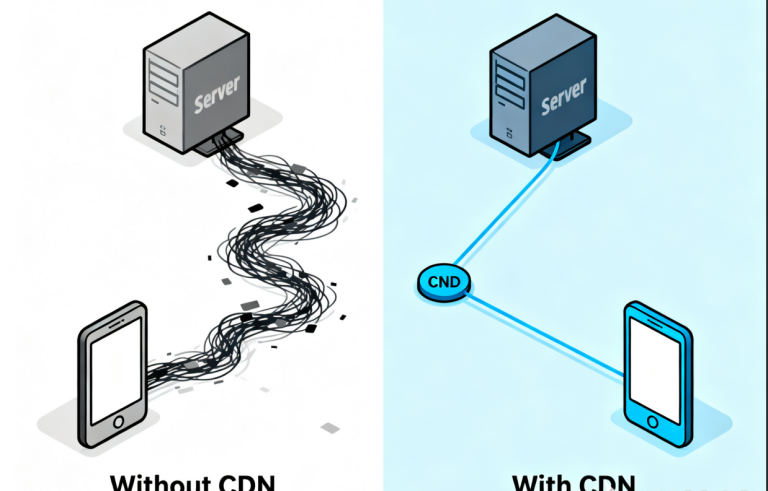
It’s a common moment of confusion, isn’t it? You’re a developer or a business owner, and you’ve heard all the buzz about Content Delivery Networks (CDNs) for speeding up websites. It makes perfect sense: a CDN caches images and videos, bringing them closer to users. Simple. But then you’re told a CDN can also optimize your APIs and WebSockets. Your mind suddenly goes, "Wait, what? Aren't those dynamic? Don't they need to talk directly to my server in real-time?" It's a sudden, jarring disconnect from everything you thought you knew. The truth is, a high-performance CDN is no longer just a caching layer for static content. It’s an intelligent network that can fundamentally transform the speed and reliability of your dynamic, real-time applications. Ignoring this capability is like buying a Ferrari and only ever using it to drive to the grocery store. You're missing out on its true power.
So, let’s peel back the layers. We’re going to dive deep into how a CDN, once a simple tool for static file delivery, has evolved into a crucial asset for optimizing the most complex and sensitive parts of your application’s architecture. This is about taking the conversation from a simple request for a picture to a continuous, real-time dialogue.
The Unseen Traffic Jam: Why APIs Need a CDN
When we talk about a CDN, we often think of it solving the "last mile" problem of content delivery. But with APIs, the problem is different. An API (Application Programming Interface) is a set of rules that allows different applications to talk to each other. When your mobile app talks to your server, it’s using an API. When your website fetches live data—like a stock price, a social media feed, or a flight status—it’s using an API.
Now, imagine your API server is like a bustling city hall, and every citizen (your app or website) has to physically go there to ask for a piece of information. For every single request, they must make the entire journey, which is prone to all the usual network congestion, latency, and packet loss. This is especially true for mobile applications that might be connecting from a spotty cellular network. Every tiny piece of information has to make the full round trip, no matter where the user is. This adds up, and it can result in a sluggish user experience that feels unresponsive and slow.
A CDN changes this by creating a smarter, more efficient route. While it can't cache the dynamic response of an API (because it changes with every request), it can do two incredibly important things:
Accelerate the Request: A CDN can use its global network to route the API request through the fastest, least-congested path. Think of it as a personal escort service for your data packet, guiding it through the digital highway system to avoid traffic jams. It ensures the request reaches your origin server as quickly as possible.
Maintain the Connection: The CDN's edge server—the one closest to your user—can keep the connection to your origin server warm. This reduces the time it takes to establish a secure connection for each new API call, a process known as the SSL handshake. This is a subtle but profound optimization that shaves off precious milliseconds on every single request, making your app feel snappy and responsive.
This is a powerful shift. It means your API isn’t just a destination; it's part of a global, high-speed network that makes every call more reliable and faster.
The Real-Time Dialogue: How CDN Powers WebSockets
Now, let's talk about WebSockets. This is where the concept of a CDN’s role gets truly interesting. A traditional API call is a one-way, "request-response" interaction. A WebSocket is a persistent, two-way communication channel. Think of it as the difference between a one-time phone call and a continuous video conference. WebSockets are used for real-time applications like live chat, online gaming, stock tickers, and collaborative documents. The constant, low-latency connection is everything.
You might be thinking, "How can a CDN possibly help with a persistent connection? Doesn't the traffic have to go directly to my server?" And you’d be right to be confused. But here's the clever part: A high-performance CDN can act as a WebSocket proxy.
Instead of the user's browser connecting directly to your origin server, it connects to the nearest CDN edge server. That edge server maintains the persistent connection with your origin. The CDN handles the back-and-forth traffic between the user and your server, all from a geographically closer location.
Reduced Latency: By acting as an intermediary, the CDN drastically reduces the latency for the initial connection and for all subsequent data packets. The long-distance part of the journey is now only from the CDN edge server to your origin server, not from the user's device all the way to your origin. This is a game-changer for anything that requires real-time responsiveness.
Increased Reliability: If your origin server experiences a brief outage or a network blip, a smart CDN can continue to maintain the connection with the user, providing a buffer and a seamless failover mechanism. It's a shock absorber for your real-time data, preventing the sudden, jarring disconnections that frustrate users.
Security at the Edge: As a proxy, the CDN can apply its powerful security features—like DDoS protection and WAF—to your WebSocket traffic. This adds a critical layer of defense to your real-time applications, protecting them from attacks that might otherwise overwhelm your servers.
This is a profound realization. A CDN isn't just delivering content; it's facilitating and securing a continuous, two-way conversation. It takes the inherent latency of a global network and turns it into a smooth, seamless experience that feels local, no matter where your users are.
The Ultimate Goal: A Snappy, Responsive User Experience
In the end, all this technical wizardry comes back to one simple thing: the user. When your mobile app feels instant, when your chat application updates in real-time, when the stock ticker never lags, you're not just providing a service; you're providing an experience that feels alive and connected.
The frustration and confusion we feel when an application is slow is a direct result of network latency. It’s the feeling of a conversation where the other person takes a long time to reply. A CDN, by optimizing your APIs and WebSockets, takes that frustrating silence and turns it into a fluid, uninterrupted dialogue. It's the difference between a broken radio transmission and a crystal-clear phone call. For any business that relies on real-time data, this is no longer a luxury; it’s an absolute necessity.

